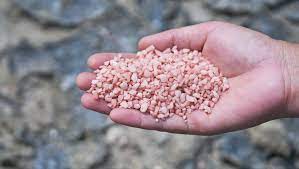Nitrogen has hit the headlines in the last few months, not just within agriculture, but across the mainstream media on the back of factory closures. Within agriculture the focus has clearly been on the steep price rises and the resulting impact on the economic optimum rates. These calculations are wholly justified, but as is often the case, are very singular focused, argues a paper titled ‘Potassium and Nitrogen Interactions in Crops’ published on the Potash Development Association (PDA) website. PDA is an independent organization, formed in 1984, to provide technical information and advice in the United Kingdom and Ireland.
The paper presents evidence from field experiments in the UK which shows that the plant-available potassium (exchangeable K) status of a soil has a considerable influence on the uptake of nitrogen (N) by crops. Yield response to applied fertilizer N is decreased when the exchangeable K content of a soil is below a critical target level. This response by a crop to one nutrient being dependent on an adequate supply of another nutrient is known as an interaction between the two nutrients. Where such interactions occur there is no point in saving on one fertilizer input if this affects an important aspect of crop growth which limits the effect of another fertilizer input. And if N is used inefficiently not only is this a financial cost to the grower but there is also the risk that any excess unused fertilizer N lost from the soil can have undesired adverse effects on the environment.
The interactions between N and K on crop growth and yield that are seen at the agronomic level can be explained by their effects and interactions on the growth processes within the plant at the tissue and individual cell levels. Knowing how these interactions within the plant control its growth makes it easier to understand why it is important to have sufficient exchangeable K in the soil. Maintaining an adequate level of soil potassium over the long term is important because on potassium deficient soils it is difficult to distribute fresh potash fertilizer sufficiently evenly throughout the rooting zone in the season it is applied for the roots to access enough potassium to produce optimum yields.
Similar effects in farm practice could offer the opportunity for considerable savings in the cost of N fertilizer. The larger grain protein contents show that crops grown on soils with more exchangeable K took up more of the applied N. As the applied N increased from 120 to 200 kg/ha, the increase in yield ranged from 12-20% and the increase in N content from 15-24% due to the soil containing more exchangeable K. Applying N to meet increasing demand by a rapidly growing crop invariably results in a very obvious visual response, which is usually associated with an increase in yield. This frequently observed association between N supply and yield is expected almost as a matter of course. What is less obvious and rarely realized, however, is that the increased supply of N also greatly increases the amount of water in the crop. The increased water content in crops well supplied with N is the direct result of the stimulation of cell division and cell expansion. The increased water content leads to an increased demand for larger amounts of osmotic solutes, principally as potassium, to maintain turgor. Thus, applying more N to increase yield requires more plant-available K in the soil and without this K, the response to N will be limited.




